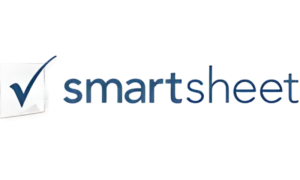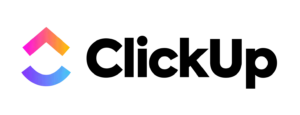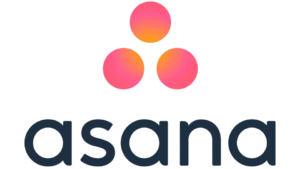For companies today, having reliable systems to manage tasks and projects can’t be seen as an afterthought if they want optimal efficiency. As staff work more remotely across locations, user-friendly digital tools are needed to plan work, assign duties, track progress, and drive on-time completion.
In this review, we will explore the leading task management platforms on the market that help users plan projects, assign tasks, set due dates, track progress, and ultimately ensure work gets completed on time.
The tools we will compare include stalwarts like Asana, Trello, and ClickUp, along with our very own platform, HighGear. Now, while HighGear offers much more than mere task management as an enterprise-grade no-code automation solution, it does provide sophisticated task routing, tracking, and oversight capabilities as part of its workflow management functionalities.
Effective task management software centralizes communication around work, reduces redundancies, ensures accountability through oversight, prioritizes and schedules work, and equips managers to spot bottlenecks early. With the right platform adopted, teams and organizations can greatly optimize productivity, shorten cycle times, reduce errors, and accelerate growth.
In this review, we will look under the hood at the features of the top contenders to help you identify which solution may be the right fit for your business.
Best Task Management Software Tools Compared
| Software | Key Features | Client Rating |
| HighGear |
|
5.0 out of 5 on GetApp |
| Smartsheet |
|
4.5 out of 5 on GetApp |
| ClickUp |
|
4.6 out of 5 on GetApp |
| Teamwork |
|
4.5 out of 5 on GetApp |
| Todoist |
|
4.6 out of 5 on GetApp |
| Asana |
|
4.5 out of 5 on GetApp |
| Trello |
|
4.5 out of 5 on GetApp |
7 Best Task Management Tools for 2024
With an abundance of task management software solutions promising improved coordination and visibility into work, it can be a challenge for businesses to select the right task management system. So, to help narrow down the choices, we have curated what we believe are the leading platforms as of 2024.
1. HighGear

Our no-code workflow automation platform is at the forefront of task management solutions. It’s renowned not only for its capability to handle the most complex workflows but also for its suite of advanced features that make it much more than just a mere enterprise task management software.
However, staying on task, let’s look at what it offers in the way of task management features:
Centralized Task Hub
HighGear consolidates all tasks, projects, and cross-departmental work into a single source of truth to eliminate scattered tracking. Customizable hierarchies and categories enable enterprise-wide consistency.
Intelligent Task Prioritization
Smart queues automatically surface prioritized tasks to ensure team members know the right work to tackle and when. Required guesswork removed.
Task Workflow Automation
Build sophisticated workflows across teams, departments, and systems to automatically route tasks upon completion without any emailing. Prevents items falling through the cracks.
Proactive Status Notifications
Stay on top of work with in-system alerts on upcoming deadlines or delays, escalated to the right stakeholders at the right time.
Real-Time Progress Visibility
With continuous activity feed updates, managers have clear insights into individual and team workstreams on which to base decisions. Enables true coordination.
Recurring Task Scheduler
Easily set tasks to repeat on custom schedules, ensuring no routine work gets overlooked. Enables teams to focus creativity on higher-value work instead.
Asset Association & Transfer
Attach all relevant files directly to tasks and projects and automatically transfer assets to new owners when handing off work. Prevents duplication of efforts.
Integrations
HighGear natively integrates with platforms like Zapier and Microsoft Power Platform, enabling easy connectivity with thousands of popular software applications. HighGear also offers a comprehensive API to link workflows across vital enterprise systems.
And this is just the tip of the iceberg of the features of our No-Code workflow automation platform. See firsthand how easily automating even the most intricate operations can propel your enterprise’s efficiency into overdrive.
2. Smartsheet

Smartsheet emerges as a formidable contender in our task management tools showdown with its blend of traditional and innovative task management features. Known for its spreadsheet-like interface, Smartsheet stands out for its flexibility and ease of use in managing tasks.
Let’s explore some of its features:
Flexible Multi-View Data Visualization
Smartsheet lets teams view tasks and project data across interactive grids, Gantt charts, cards, and calendars. Quickly toggle layouts to fit information needs, customize fields, and apply filters for insights.
Document Workflow Automation
Manage the document lifecycle from within Smartsheet – create, send, track, and store PDFs, agreements, and forms without switching platforms.
Custom Reporting
Quickly build reports combining multiple projects’ metrics into dashboards, using column values and filters for deep visibility into work performance. Easy exportability.
Integrations
It connects seamlessly with various apps and services, from document storage solutions like Google Drive and Dropbox to communication tools like Slack and Microsoft Teams.
3. ClickUp

ClickUp positions itself as a versatile and comprehensive task management tool designed for everything from simple task tracking to complex project management. It’s celebrated for its adaptability and user-friendly interface, promising to consolidate tasks, docs, communication, and knowledge into a unified platform.
Let’s examine some of ClickUp’s standout features:
AI-Powered Productivity
ClickUp introduces AI designed to improve work efficiency across different roles within a team. Using artificial intelligence, tasks and processes are made easier for users so they can focus on high-value activities.
Multiple View Options
With over 15 different views, including list, board, Gantt, and calendar, ClickUp users can visualize their work in a way that is intuitive for them.
Goal Tracking and Reporting
ClickUp includes features for setting, tracking, and managing goals, providing detailed reports and insights so managers and team members can monitor progress.
Integrations
ClickUp natively integrates with over 1,000 popular applications. Users can connect a vast range of tools for free through ClickUp’s own integrations as well as third-party APIs.
4. Teamwork

Teamwork is an all-in-one project management and task management software with a comprehensive set of features. The platform provides a unified view of teams, projects, sub-tasks, clients, and freelancers for simplified management.
Let’s look at some of its key features:
Multiple View Options
Choose the view that suits you best, from lists and tables to Kanban boards and Gantt charts.
In-built Time Tracker
Log time directly on tasks and generate timesheets reporting where efforts are being spent, enabling better resource planning.
Milestones
Set goals or checkpoints within your projects to monitor progress and give your clients visibility into how things are advancing.
Integrations
Offering over 80 integrations with some of the most popular tools, such as G-Suite, Microsoft Office, and Zapier, Teamwork ensures you can connect workflows without leaving the platform.
5. Todoist

Todoist stands out among task managers for its simplicity and ease of use in capturing, organizing, and tracking personal to-dos across devices. While less complex than some platforms, it could be a good option for start-ups or small businesses.
Let’s analyze some Todoist features:
Todoist Karma
This feature awards users with “points” each time they take steps toward meeting their productivity goals, essentially gamifying task management.
Project Views
Supports various project views—List, Table, Boards, and Gantt—to accommodate different team preferences, similar to other software in this comparison.
Instant Task Capture
Carry out quick task entry using keyboard shortcuts, voice commands, and browser extensions.
Integrations
Todoist integrations include communication platforms such as Slack and time management apps like Time Doctor and Timetrap, alongside Zapier and Zendesk.
6. Asana

Asana is another task and project management software that has built up a solid reputation with its users. All in all, it’s a good task management software for tracking progress and developing team synergy.
Let’s look at a few of its task management capabilities:
Timelines
Asana’s timeline feature provides a clear and straightforward visualization of project timelines and interdependencies so that adjustments to dates and milestones are easily carried out to keep projects on track.
Multi-homing
With Asana, users can take a task and link it across multiple projects. This “multi-homing” makes it easy to track a task that spans different teams’ efforts. Whenever that task is updated in one location, changes sync across each linked project automatically.
Dependencies
Dependencies are another useful feature to establish the sequential relationship between tasks. For instance, if task B cannot commence until task A is completed, a dependency can be set to reflect this prerequisite, ensuring clear workflow progression.
Integrations
Connect workflows with tools like Slack, Dropbox, Zoom, and Salesforce among 200+ apps.
7. Trello

Butler
Trello Butler is a built-in workflow automation tool that can configure rules, buttons, and commands that trigger actions like assignments, date changes, and notifications automatically upon designated events.
Subtask Checklists
Trello makes it easy to break tasks into smaller, manageable subtasks within a single card.
Card-Based Storage
Upload relevant documents directly to task cards for centralized management without relying on external file storage systems.
Integrations
Trello supports over 200 integrations, including the likes of Salesforce, Slack, Google Drive, and more.
How to Choose the Best Task Management Tool for Your Enterprise
With the right task management software platform adopted, teams gain an invaluable system to facilitate coordination, oversight, and on-time work completion. We’ve given you our opinions on who should rank as the current leaders in the ‘best task management software’ arena.
However, what if you want to evaluate options yourself?
These are some of the features to look for as you assess task management solutions:
Customizable Dashboards – Look for task management tools that offer customizable dashboards to give team members a personalized overview of their tasks, deadlines, and priorities, helping them stay organized and focused.
Flexible Task Categorization – Being able to categorize tasks by projects, departments, urgency, or custom tags can help teams efficiently sort and prioritize workloads.
Real-Time Visibility and Task Assignment – To keep projects on track, explore tools with real-time updates on task progress. It makes it much easier for managers to assign tasks efficiently and monitor deadlines, ensuring timely completion.
Comprehensive Reporting and Analytics – Decision-making becomes much more effective with access to detailed reports and analytics. Task management software that offers customizable reporting to track performance metrics, identify bottlenecks, and optimize workflows is the way forward.
Alerts & Notifications – Automatic alerts that provide reminders, notify users on task completions or let users know when their input is blocking others.
Workflow Automation – Automation features that trigger actions based on predefined rules can significantly reduce manual work, streamline operations, and minimize the risk of human error.
Integration Capabilities– Review what other software platforms the tool integrates with to streamline cross-functional workflows.
Scalability for Enterprise Use – Think ahead! The task management software you choose should scale with your business, supporting everything from simple tasks to complex, mission-critical processes without compromise.
Ease of Use – An intuitive user interface with a reasonable learning curve drives organizational adoption and productivity. Complex tools with clunky UIs often fail to gain traction among teams.
Access Controls and Data Security – For regulated industries, especially, a task management platform with role-based permissions, access controls, and data encryption are essential to both safety and compliance.
Mobile App Functionality – With remote and hybrid work becoming prevalent, having a well-designed mobile app so users can update tasks, collaborate, and stay connected on the go is rising in importance.
Project Planning and Roadmapping – This crosses over into project management software, but for project-centric teams, options with interactive roadmaps, Gantt charts, or timeline views facilitate planning and conveying longer-term initiatives.
Support and Training – The responsiveness and accessibility of vendor customer support influence user experiences in the long run. Some offer more useful resources than others.
Pricing Considerations – The pricing model, monthly cost per user, and tiered feature packages offered can vary notably across top platforms. However, be wary of selecting primarily on sticker price alone – cheaper tools that ultimately hamper adoption or growth could prove far more costly long term.
HighGear – Cut to the Checkered Flag of Task Tools
As we have seen, all of the reviewed platforms offer a compelling set of features for organization-wide task and project oversight. Any of these solutions would provide companies with capabilities far beyond makeshift task-tracking methods like emails and spreadsheets.
However, while the other tools serve task management purposes well, HighGear takes it to the next level. Beyond basic task features, it shines in its capacity to automate workflows end-to-end in a no-code environment.
